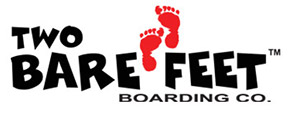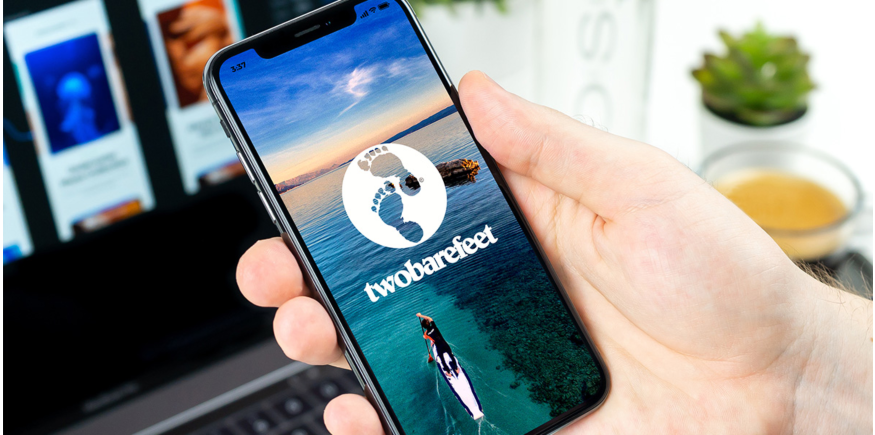While bringing a smartphone to the water may seem illogical unless you have a water-proof bag and rock-solid phone insurance, the digital Swiss army knife in your pocket can improve your enjoyment of paddleboarding as a whole.
When you imagine pairing smartphone use with physical activity, you’re likely to assume this just means logging a session with an ‘activity tracker’ or recording your journey using GPS.
But there’s much more to which SUP-oriented apps can be applied. After all, for many paddleboarding isn’t simply a sport — it’s an experience and a lifestyle, underpinned by a thriving and enthusiastic community.
This article takes a look at some of the core reasons for leveraging your phone or tablet in pursuit of your favourite pastime, and identifies some of the apps helping with this.
Disclaimer: Here at Two Bare Feet, we’re not in the business of providing biased recommendations or reviewing third-party products — the apps mentioned below have been selected as illustrative examples which help to qualify the categories we’ve created, often because they are established brands or well-known solutions. It is not the intention of Two Bare Feet to endorse or promote any of the products mentioned. We also have no commercial associations with the developers, publishers or distributors of these apps.
With that out of the way, let’s dive in!
All-purpose activity trackers
Especially since the proliferation of GPS-enabled wearable technology, such as fitness bands (e.g. FitBit) and smart watches, activity trackers have seen a significant rise in popularity. Although many activity trackers can be utilised with a smartphone alone, the additional sensors built into wearable tech, such as pulse rate monitors and accelerometers, allow for greater accuracy in the measurement of motion and physiological response.
Most of the established activity tracking apps are designed to monitor performance while participating in any sport, be it badminton, cross country skiing or paddle boarding. This doesn’t mean they can’t be of value to a casual or novice paddler.
In addition to acting as a stopwatch, most activity trackers will also use GPS to track your position, provide real-time feedback on your speed, heading and distance travelled, and allow you to log this information so that you may compare against future and past sessions.
Many tracker apps provide some social sharing functionality, meaning you can post your workout data to a public forum or on social media, see where other users have been and participate in challenges and leader boards.
Some activity trackers are also able to repurpose real-time GPS tracking as a means of alerting designated contacts and loved ones of your location should you choose to signal that you are in danger, or if the app detects an unusual level of inactivity.
Popular apps that fit into this category (iOS and Android) include: Strava, Endomondo, and MapMyFitness. Access to some features may require a subscription fee.
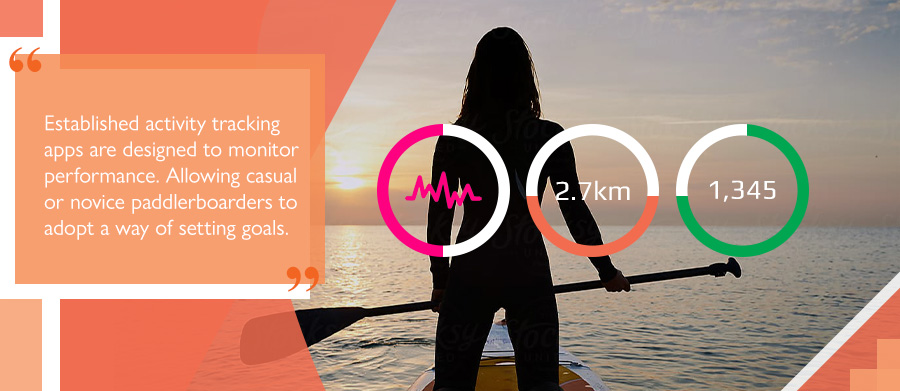
SUP-specific tracking apps
App design can have important ramifications on how, when and why a person chooses to use it for a particular purpose. Take paddleboarding: it’s great that there is a variety of general-purpose tracking apps available. However, if an app is not specifically designed for your chosen activity, then if you are the sort of person who really needs accurate granular data on your performance – perhaps because you’re training for a race or endurance event – then the ability to trust that data may be somewhat diminished.
Thankfully the SUP community has been better served in recent years with the introduction of SUP-specific tracking apps. Perhaps the best known of these is Paddle Logger (iOS only).
Paddle Logger provides the convenience of being able to track and record paddle boarding excursions, but within an app which contains nuanced design which works with a paddler’s situation.
For example, Paddle Logger’s start button is oversized and placed centrally in the screen. This means that – even in unstable conditions or while wearing gloves in cold weather – you are going to be able to activate the tracker with one hand, without struggling.
The app also contains an option for a ‘delayed start’, meaning you can push the button to activate the start of a session, but still have enough time to then safely stow your phone and launch your board before the app begins to track you.
Like some of the well-known all-purpose trackers, Paddle Logger also contains an alert feature. Called ‘Paddler in Trouble’ (PiT), it lets you send out a ‘digital flare’ to a contact or anyone tracking your progress if you run into difficulties. The device will also check in with you after a scheduled period and send out emergency notifications if it doesn’t get a response from you.
Other features include Apple Watch integration, and the ability to share your progress with friends, family and fellow app users.
As the app developer is also a keen paddler, future development is much more likely to be tailored to the specific needs of the SUP community — suggestions are always welcomed.
Paddle Logger: Free (with some premium paid-for features); iOS only.
You may also want to consider: GeoSUP (iOS only)
Environmental monitoring apps
Smartphone apps aren’t only good for activity tracking; there are other subtle uses which can contribute to your enjoyment of the water.
For example, easy access to data published by meteorologists and environmental agencies can help you plan the best time to visit a launch spot, so that your performance won’t suffer in the face of, say, strong winds or tidal flows.
RiverApp (iOS and Android) is a good example of an app which benefits the paddleboarder through open sharing of data. Describing itself as ‘The most widely used application to monitor river conditions’, RiverApp provides at-a-glance access to information on water levels and the navigability of waterways across the world. If water levels are too low for paddling, the app can alert you instantly. It also carries historical data for the locations in its database, which means you can plan the optimum time to visit a launch site well in advance.
RiverApp: Free (with some premium options), available for iOS and Android.
Other apps to consider: WindAlert (iOS and Android); Weather Radar Live (iOS only)
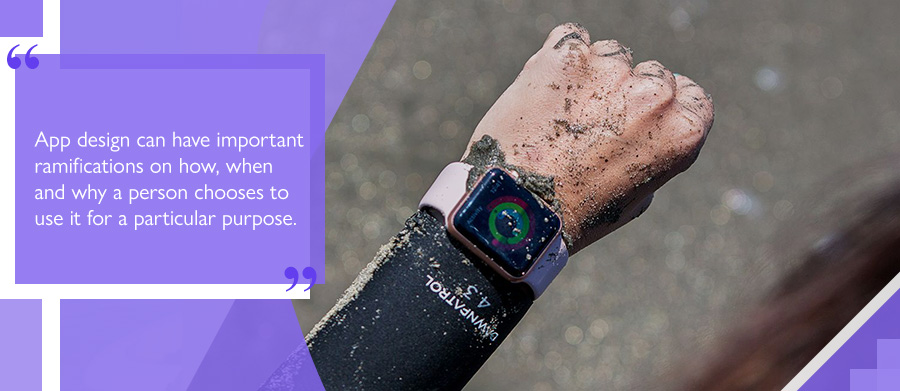
Apps to improve paddling technique
Paddling with others or actively seeking lessons can be a great way to find your feet on a SUP. But this may not always be an option. Equally, if you’re an intermediate SUP user or a specialist who wants to race or surf, you may feel there aren’t many interactive resources available to help bolster your performance outside of activity trackers and online videos.
Fortunately there are paddleboarding communities online trying to plug the SUP knowledge and skill gaps. One well-known example of this in action is Paddle Monster (iOS and Android).
Paddle Monster provides access to training coaches who can help guide you through an extensive selection of strength and technique training regimens.
In addition to the one-to-one contact, you’ll also be able to make use of videos, discussion forums and written training programmes that will aid with your development.
On top of the core focus on performance gains, Paddle Monster also features a strong community built around a shared interest in being better at their sport. As well as the ability to post about achievements, there are event listings for those seeking to participate in races and other organised challenges. There’s even a classifieds section for anyone in the market to buy or sell used paddleboards.
Paddle Monster: (iOS and Android) Free to download, but training programmes are a premium subscription offering.
Other apps to consider: Motionize SUP (iOS and Android)
Find new paddleboard launch sites
One of the great advantages of being able to track where you have been paddling is that this information can be passed on to other paddlers, by way of recommendation. Many tracking apps offer this information by allowing users to post their activity to social feeds, or hope to encourage it by fostering community discussion.
There are apps, however, which exist solely for the purpose of helping paddlers discover new places to take their boards. Go Paddling (iOS and Android) is a good example of this.
Designed as an open platform to map locations visited by paddleboarders (and other watersports enthusiasts), Go Paddling is simple in its premise and execution. It allows any user to drop a pin in a map and provide comments about their experience, as well as any useful notes that may aid the prospective visitor (e.g. where to park).
According to the developer, the app currently provides details of over 22,000 locations worldwide. How useful the app will be to you will largely depend on your proximity to any of the listings, as well as your ability to access them. However, you can help the community by simply adding locations you know of that aren’t listed, or updating any inaccuracies or omissions in existing listings.
Go Paddling: Free (iOS and Android)
You may also want to try: iOverlander (iOS and Android)
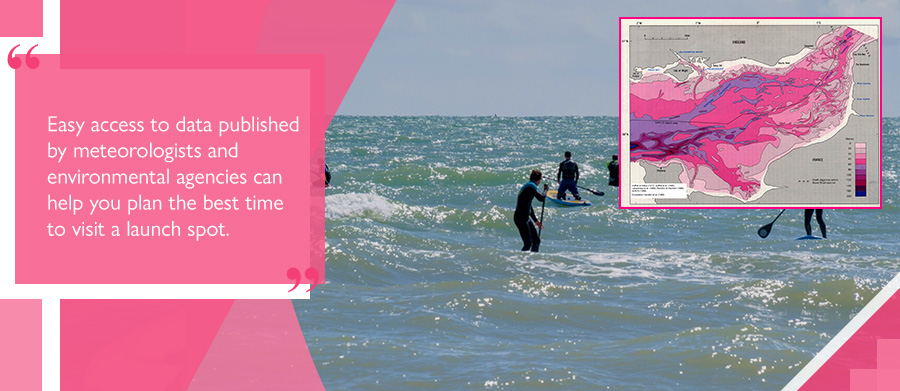
Get the latest news from the paddleboarding world
If you’re looking for updates on new boards, events, recommended SUP locations or any paddleboarding happenings, you could filter through all the videos, social posts and blogs on the web. Alternatively, why not let someone you trust curate the deluge of news for you?
This is where dedicated digital magazine apps for paddleboarders come in handy. Install one on your phone and you’ll have the option to stay informed and entertained, even while spending a few lazy hours on the float.
One example of this is the app designed to accompany SUP International Magazine. Written and published in the UK, the app version of the popular periodical provides access to all of the essential information contained in the print edition: board tests, features, interviews, technique tips, travel recommendations and more — with the added bonus of being able to deliver content only possible on a digital platform: i.e. videos, more images than a printed page has space for, and links to useful online resources.
SUP International is available for iOS and Android. It’s free to download, but some content is only available to purchase.
You may also want to try: Tonic Mag or Paddling Magazine (both available for iOS and Android).
Engage with the SUP community
Communities for interests of all flavours have taken root on the web. For paddleboarding enthusiasts, the global SUP community can be a great source of motivation: e.g. by seeing and feeding back on other people’s progress; a way of learning: e.g. getting feedback and tips from your peers on your technique; or a way of making informed decisions that affect your pursuit: e.g. what board to buy, where to paddle, what accessories you may need. In addition, digital platforms can provide a great way of getting to know other people who share your passion for being out on the water.
If you’re looking to make connections with the SUP community at large, there’s a wealth of options available to you. In addition to the big-name social media channels, many of the paddleboard-specific tracking apps and training repositories provide social functionality which will allow you to share photos and videos, leave comments and establish or participate in focused forums. The tone and focus of discussions will differ depending on which app or platform you choose, but we’d suggest exploring until you find one that works for you.
Many of the apps mentioned earlier contain community-driven features within them: Paddle Logger, GeoSUP and Paddle Monster are all useful tools if you’re beginning to reach out to other paddlers.
Note: At the time of writing, GeoSUP is available for iOS only. An Android app is currently under development.
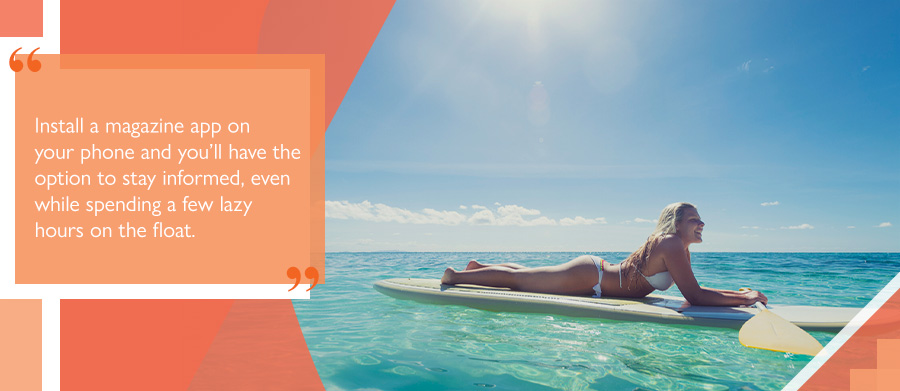
Be mindful when using apps to enhance your SUP experience
As with all smartphone / tablet apps, it’s worth remembering that your mileage will vary: platforms that are heavily reliant on user-generated content may need you to sort and filter information in order to get to what’s truly useful for you. Also, if things seem a bit quiet, or you can’t find the information you need, don’t be afraid to start the conversation yourself.
Another thing to bear in mind is the quality of an app itself. The apps we’ve listed in this article are all well maintained and contain a fair degree of ‘polish’. There are others out there which may not have as much of a budget for development, are no longer supported by the developer, or haven’t been updated for several years. That may not necessarily be a sign of poor quality, but you may want to check out reviews posted to Apple’s App Store or Google Play beforehand.
While these apps are certainly not guaranteed to ‘make’ your experience out on the water, there is a good chance they will enhance it. Use them to your advantage, and remember to stay focused on the reason you got on a SUP in the first place: to stay fit and have fun!
Need a hand getting started in the world of paddleboarding or looking to improve your existing ride? Two Bare Feet have got you covered. Take a look at our extensive selection of inflatable SUPs or feel free to browse our broad range of high-quality SUP accessories.
